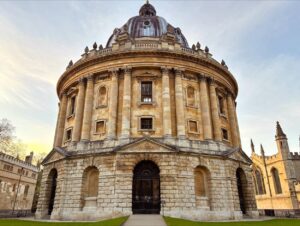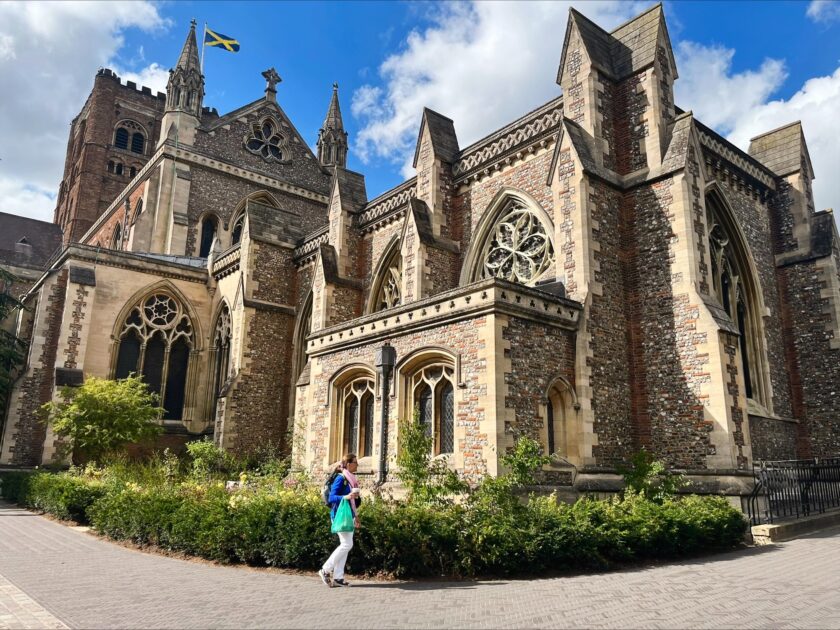
St. Albans gets relatively overlooked by tourists but this shouldn’t be the case. Despite its relatively small size, it packs a punch with a wealth of attractions to offer.
Nestled in the picturesque Hertfordshire countryside, the city of St Albans is the perfect place to go if you’re searching for alternative day trips from London when you’ve already visited cities like Oxford, Cambridge and Canterbury. Similar to these cities, St Albans possesses a charming blend of captivating architecture, rich history and quaint, cobbled streets.
Adding to the city’s appeal is its proximity to London, being just a 30-minute train ride away from the Big Smoke. If you’re looking to move to greener pastures just outside of London, St. Albans might be the answer. With its village atmosphere, cultural offerings, fabulous dining opinions, top-performing schools and great transport links, it has broad appeal.
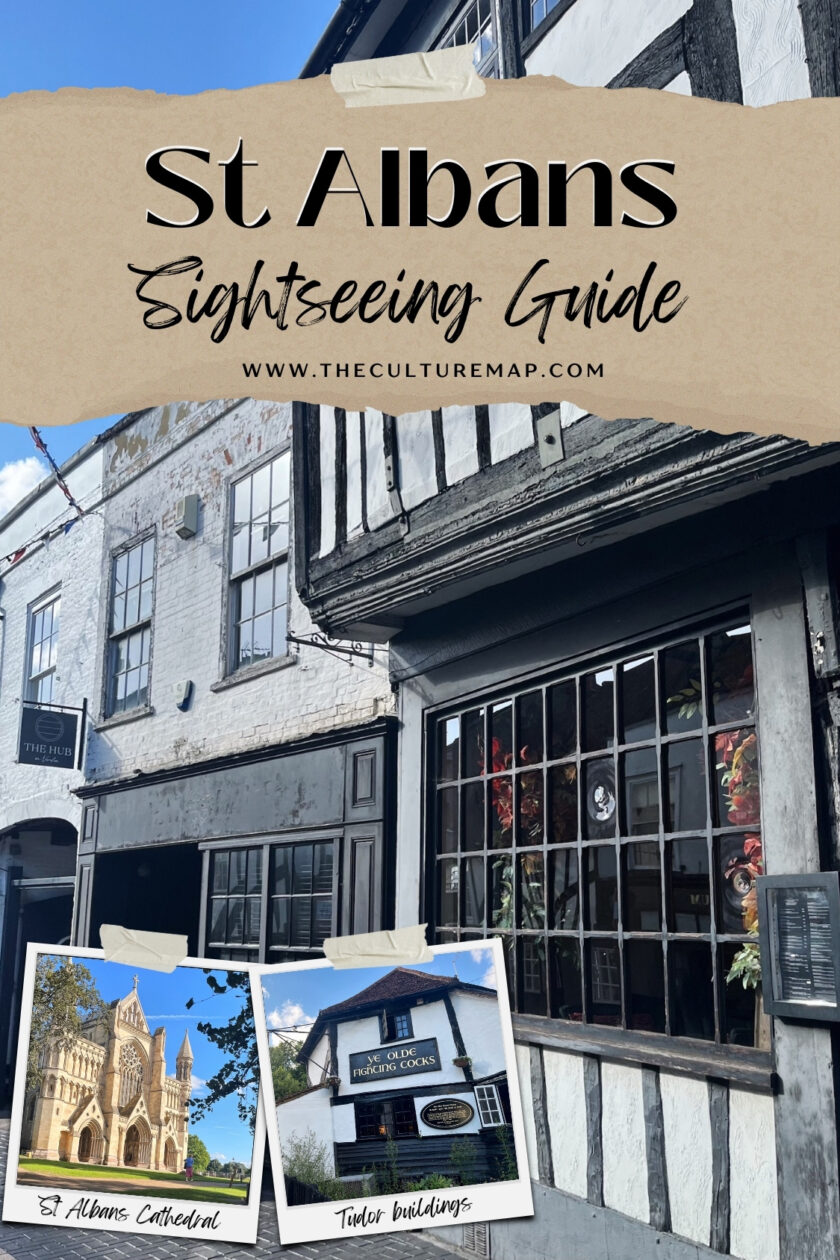
How to get to St Albans from London
- Train: Trains provide the most convenient and popular way to travel from London to St Albans. Thameslink trains operate frequently from London St Pancras International, London Blackfriars, or London Bridge stations. The journey takes approximately 20-30 minutes, depending on the train and the departure station. Buy tickets in advance: www.thetrainline.com
- Car: Driving is another option if you prefer flexibility and have access to a car. The journey from central London to St Albans is about 20 miles (32 km), and the route takes you north on the M1 motorway. Keep in mind that traffic conditions can affect travel times, particularly during peak hours.
1. St Albans Cathedral: An Architectural Masterpiece
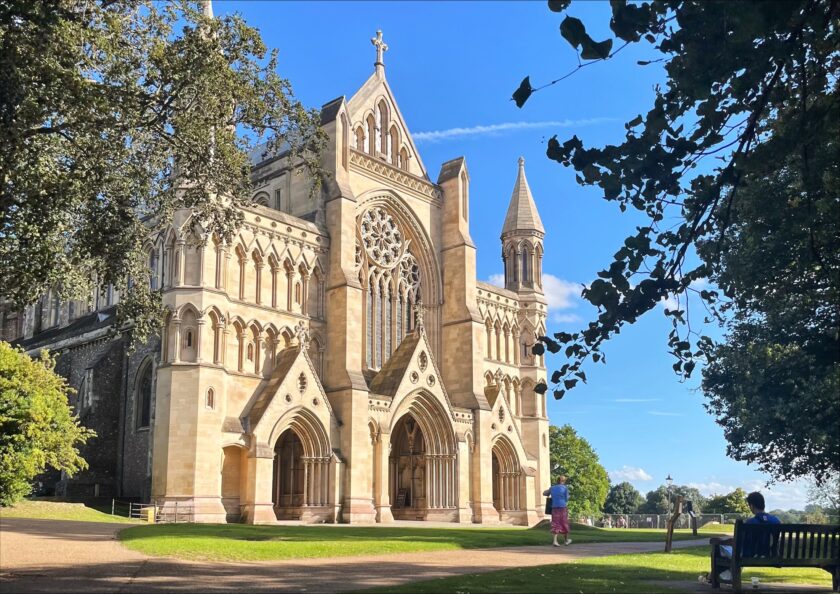
At the heart of St Albans stands a true architectural masterpiece – St Albans Cathedral. This stunning cathedral boasts a mix of Norman and Gothic architecture that is nothing short of awe-inspiring. In my opinion, it’s the most beautiful Cathedral in the whole of the UK – I know, a very bold claim indeed!
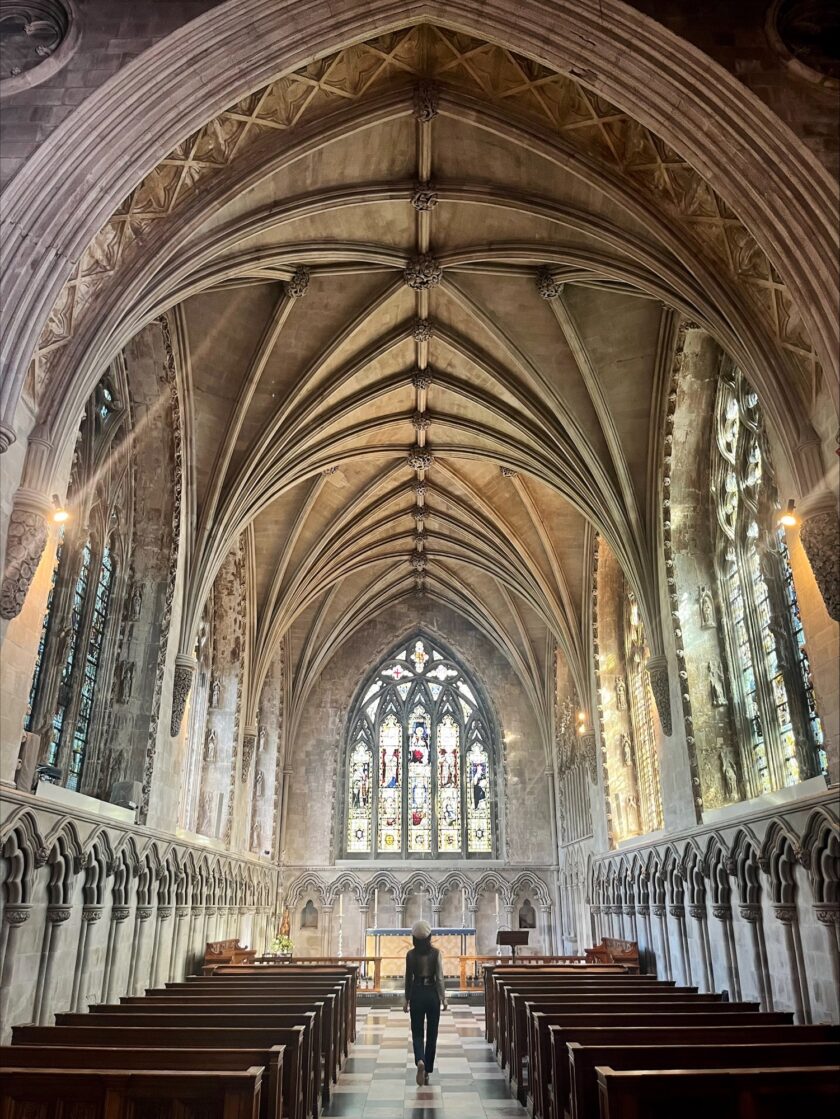
The cathedral holds immense historical significance as the shrine to St Alban, the first Christian martyr in England. The cathedral stands on the site where St Alban was executed for his faith in the early 4th century. This connection to an ancient and significant figure in the history of Christianity makes the cathedral a pilgrimage site for those interested in religious history.
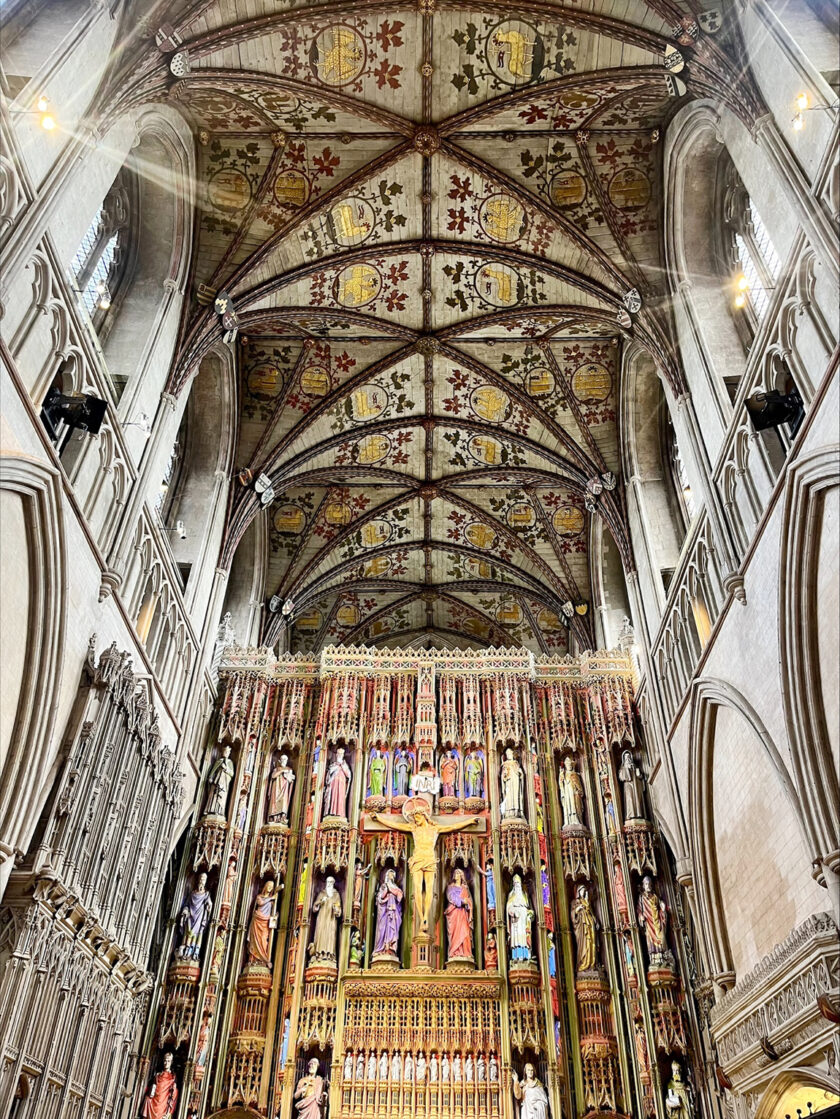
Its interior is a testament to both its grandeur and crafstmanship. Explore the intricacies of the high screen alter and panelling (pictured above), marvel at the beautifully restored shrine of St Alban, and gaze in wonder at the mesmerising Rose Window.
Here are few facts contributing to its cultural significance to British history:
- The Cathedral was built in 1077. It is the oldest site of continuous Christian worship in Britain.
- It has the longest nave of any cathedral in England, at 85 meters long.
- An actual earthquake ruined the east end of the Abbey in 1250. Sections of the Abbey had to be knocked down and rebuilt in 1290.
- Princess Diana unveiled the rose stained window in 1989.
For more information, including opening times, visit: www.stalbanscathedral.org
2. Tudor buildings: Admire well-preserved craftsmanship
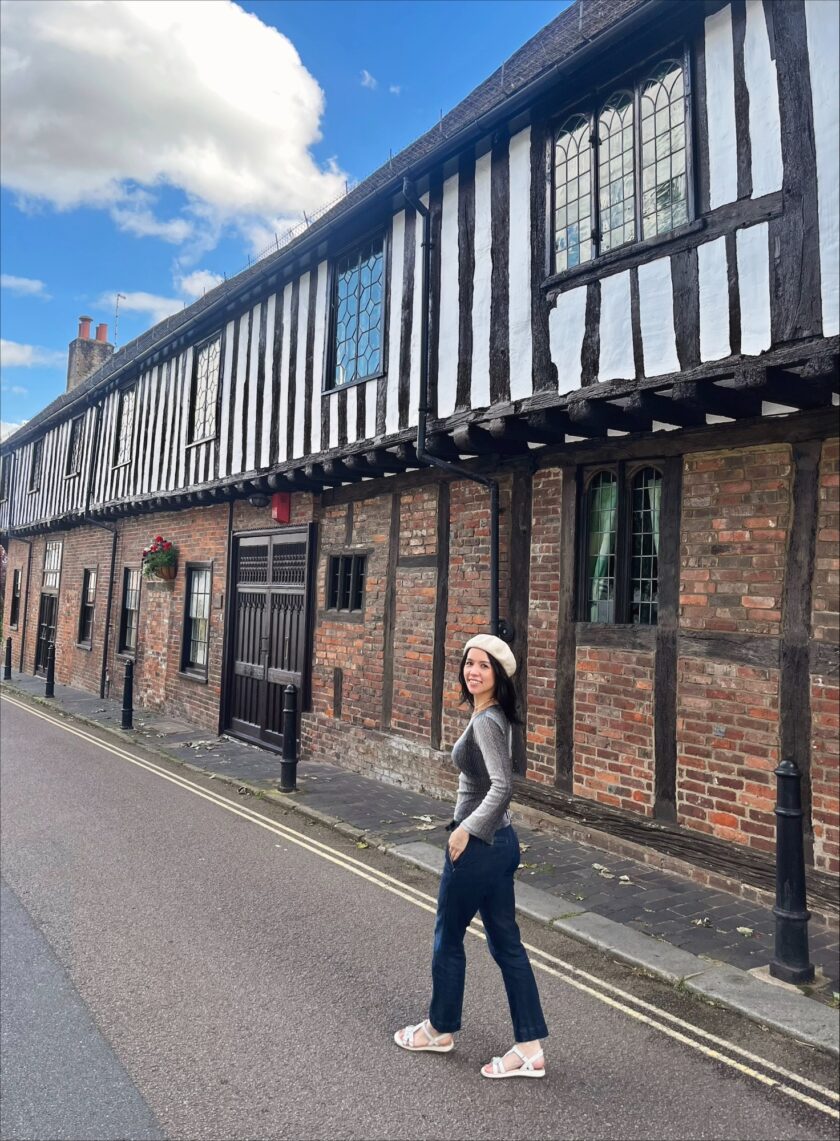
St Albans boasts a charming array of Tudor buildings that stand as a testament to its historical heritage and architectural character. These distinctive timber-framed structures showcase the intricate craftsmanship and design that was popular during the Tudor period in England. As you wander through the streets of St Albans, you’ll encounter these well-preserved treasures that evoke a sense of the past.
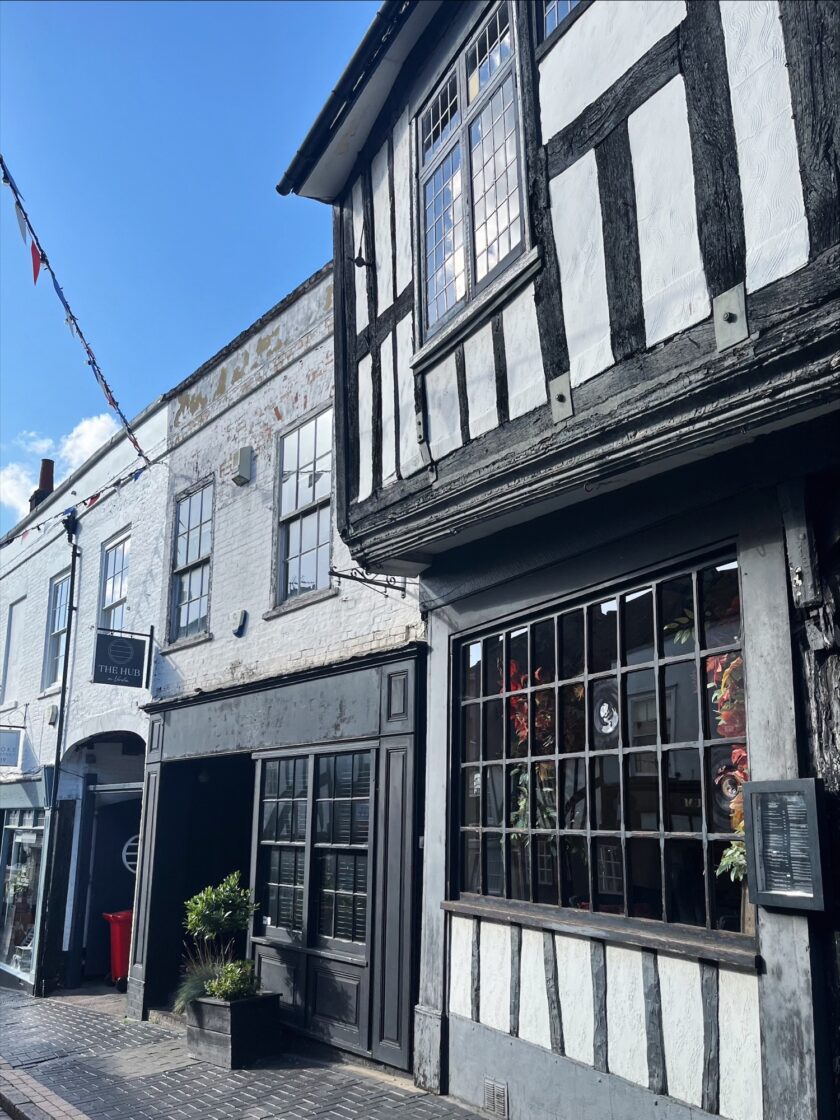
Here are a few notable Tudor buildings as well as streets that showcase some lovely timber-framed homes:
- Ye Olde Fighting Cocks – Said to be England’s oldest pub stuffed with bags of character.
- George Street – home to a high concentration of beautiful Tudor buildings. Don’t miss the facade of Thai Square and Dylans at the Kings Arms
- Sopwell Lane – wander down this little street an discover an array of lovely Tudor homes and buildings.
- Fishpool Street – Fishpool Street is another area in St Albans where you’ll find a cluster of Tudor buildings. The architecture here is a delightful mix of historical and modern elements, creating a unique blend of old and new.
- French row – one of the cutest and narrowest streets in St. Albans located to the side of St. Albans Clock Tower.
3. Verulamium Museum: Discover Roman History
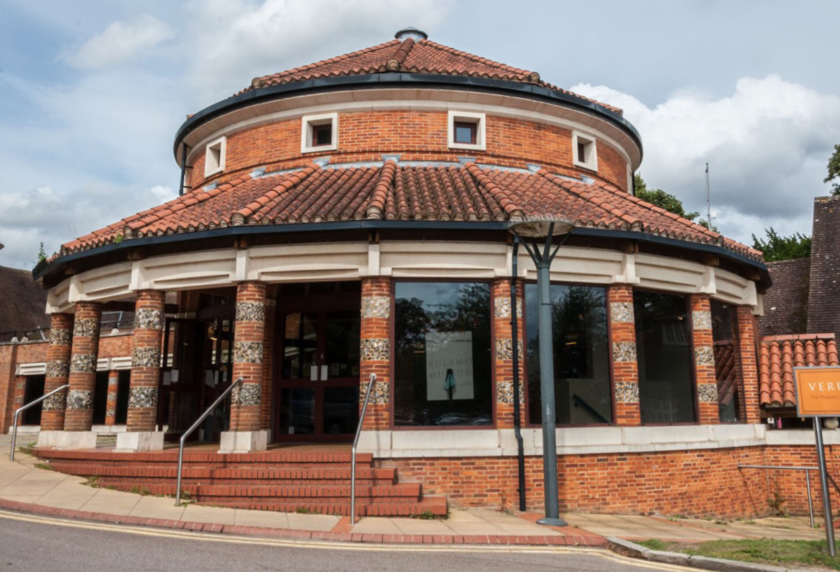
Verulamium Museum, located in St Albans, offers a captivating journey back in time to the days of Roman Britain. Named after the ancient Roman town on whose ruins it stands, the museum provides visitors with a fascinating insight into the history, daily life, and culture of this once-thriving settlement.
The museum’s exhibits are a treasure trove of artifacts and insights that bring the past to life. As you explore the galleries, you’ll encounter a diverse range of objects, including Roman pottery, coins, tools, jewelry, and more belonging to the people who once inhabited Verulamium. One highlight is a 2nd-century bronze figure of a goddess known as the Verulamium Venus, and another is ‘Postumus‘, a skeleton discovered buried in a beautifully crafted lead coffin.
4. St Michael's Village: Timeless Charm
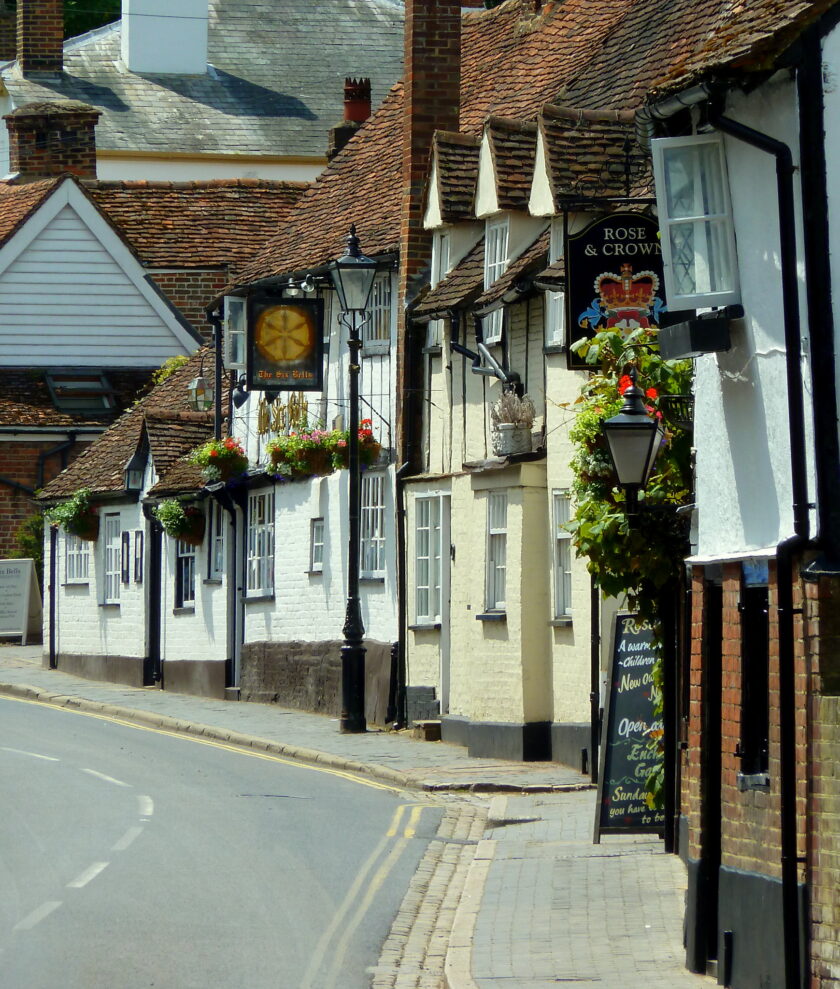
Verlamium Museum is located in St Michael’s village, which is one of the prettiest areas of St Albans. This is how visitors to England from abroad might imagine suburban England to be. Cobbled streets, charming cottages, old rustic pubs, and a couple of historic monuments evoke the ambiance of yesteryears.
You can admire the historic Kingsbury Water Mill , St Michael’s Church (Saxon in origin) and the remains of the Roman City of Verulanium with its Roman Museum. The River Ver runs through the village and adds an air of tranquility to this lovely area of St Albans.
5. Verulamium Park: Roman Ruins & Scenic Walks

Step back in time as you stroll through Verulamium Park, built on the ruins of the ancient Roman town of Verulamium – the first settlement of St Albans. This settlement dates back to the 1st century BC when a Celtic tribe built its capital at a place they called Verlamion, which translates as ‘place above the marsh‘.
For history lovers, a short walk across Verulamium Park from the museum brings you to a 3rd-century mosaic and hypocaust, protected by a low modern building. Beyond the mosaic and still within the park is the best-preserved section of the 3rd-century town wall and the foundations of one of the town’s main gates.
Furthermore, head to the lake and find a perfect spot for picnics and relaxation.
6. Explore the Pubs: Pints in a Picturesque Setting
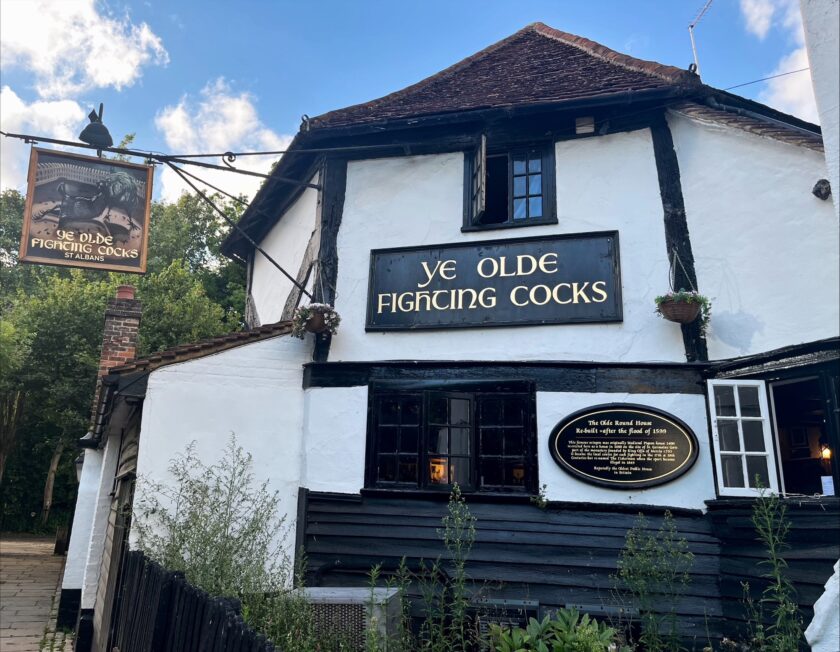
I’m not even a pub-goer but even I couldn’t help but admire all the old-fashioned pubs that line the streets of St. Albans. They all look so cute, cosy, and inviting. If you’re looking for somewhere to enjoy a pub crawl, St Albans is the place to be, seriously.
The most famous pub is Ye Olde Fighting Cocks, nestled next to the river and located just before the entrance of Verulamium Park. It is reputedly the oldest pub in England.
The pub is reputed to have accommodated Oliver Cromwell for a night during the English Civil War, and the underground tunnels provided shelter for many people in turbulent times. Its iconic presence and characterful facade make it a popular destination for both locals and visitors.
For opening times or to reserve a table, visit: www.fightcockssa.com
7. St Albans Clock Tower: A Glimpse into the Past
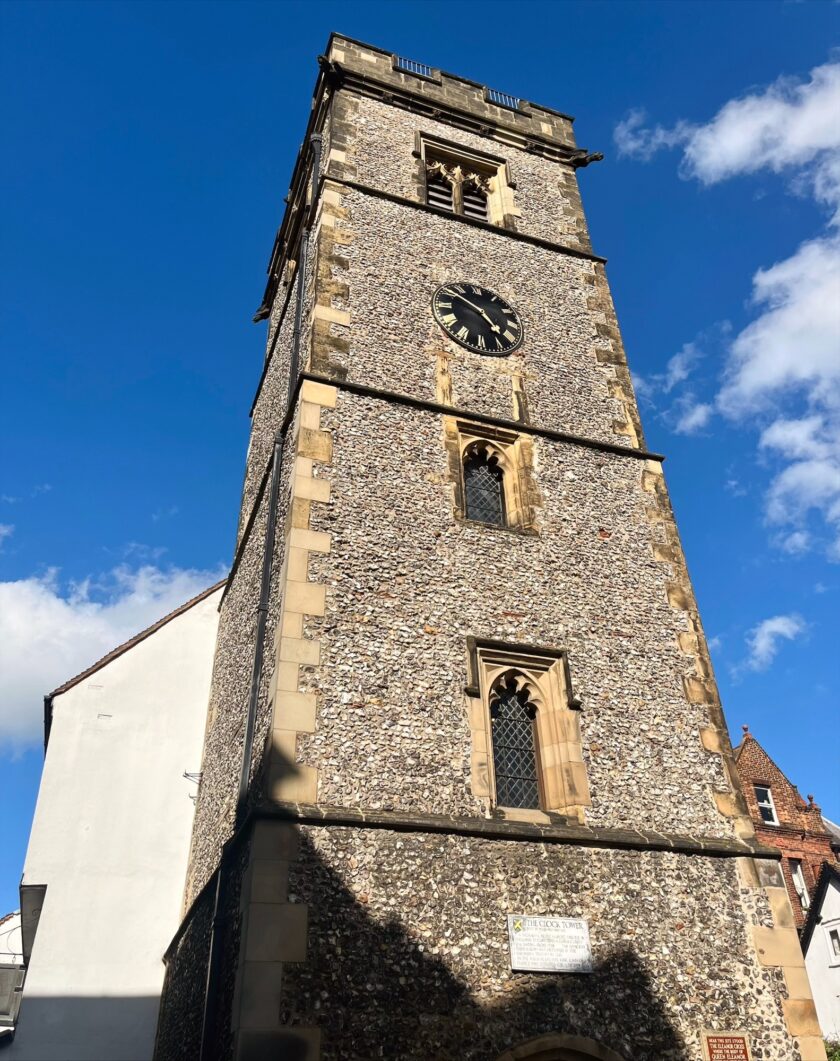
St Albans Clock Tower is the only medieval town belfry in England, dating back to 1405 and it has some stories to tell. It rang the alarm at the first Battle of St Albans in 1455, and enabled rapid cross-country communication during the Napoleonic Wars, when it became a signalling station in 1805.
Today, you can climb the 600-year-old St Albans Clock Tower to gain panoramic views of the city and surroundings. This iconic landmark provides insights into the city’s history, from its use as a watchtower to its significance in regulating market hours.
Good to know: entry is free for kids and just £1 for adults!
8. Sopwell Nunnery (Also Known as Lee Hall)
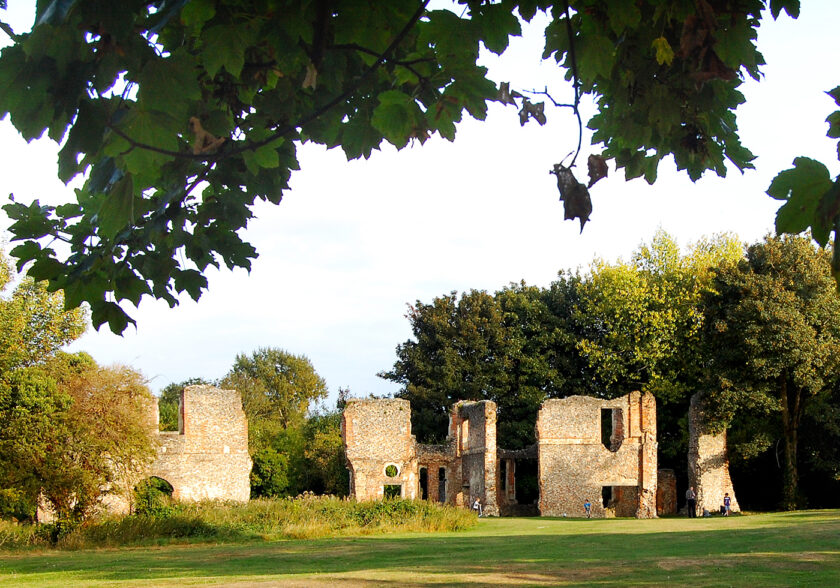
The peaceful River Ver winds its way through the historic city of St Albans. On the south bank of the river is an oasis of green parkland housing allotment gardens and beside the gardens stands one of St Albans’ secret delights; the ruins of a 16th-century manor house built on the foundations of a medieval nunnery.
When the nunnery was dissolved by Henry VIII he granted the land to Sir Richard Lee, a soldier, military engineer, and royal advisor. Lee, in turn, adapted the monastic ruins to create a fashionable manor house which he named Lee Hall. The ruins you see today are of Lee Hall though they undoubtedly incorporate stonework from the earlier medieval nunnery.
9. Experience St Albans Markets
Capture a slice of local life at St Albans Market. Browse through stalls offering a variety of goods, from fresh produce to crafts and clothing. There are a lot of markets in St Albans, and they bring the city to life with colours, flavours, and sounds. On my visit in summer, I could smell the sweet fragrance of strawberries lingering through the air, and the sound of market stall owners bellowing from the depth of their lungs to promote their seasonal offerings.
The St Albans Traditional Street Market dates back to the 9th century, and it was granted a Royal Charter in 1553. It has over 150 stalls, and they fill St Peter’s Street and Market Place with their wares each Saturday.
Other markets include the St Albans Farmers’ Market, which takes place on the second Sunday of every month, and the St Albans Antique and Vintage Market, which takes place monthly on a Sunday.
10. Odyssey Cinema
The Odyssey Cinema is a recently restored, independent Art Deco cinema in St Albans. Sadly, I haven’t been inside to catch a film, but it’s on my list of things to do after seeing its exquisite 1930s era interior.
This was St Albans very first cinema, and was designed by local architect Percival Blow (who also designed Café Rouge) in the 1900s. After being derelict for years, its relatively recent re-opening and re-naming (in honour of Stanley Kubrick who has family connections with St. Albans) adds a touch of glamour to what the city has to offer.
For showing times and film listings, visit: www.odysseypictures.co.uk.
Are you planning a day-trip to St Albans?
For more day trip ideas from London, check out: 14 London Day Trips That You Will Love.



